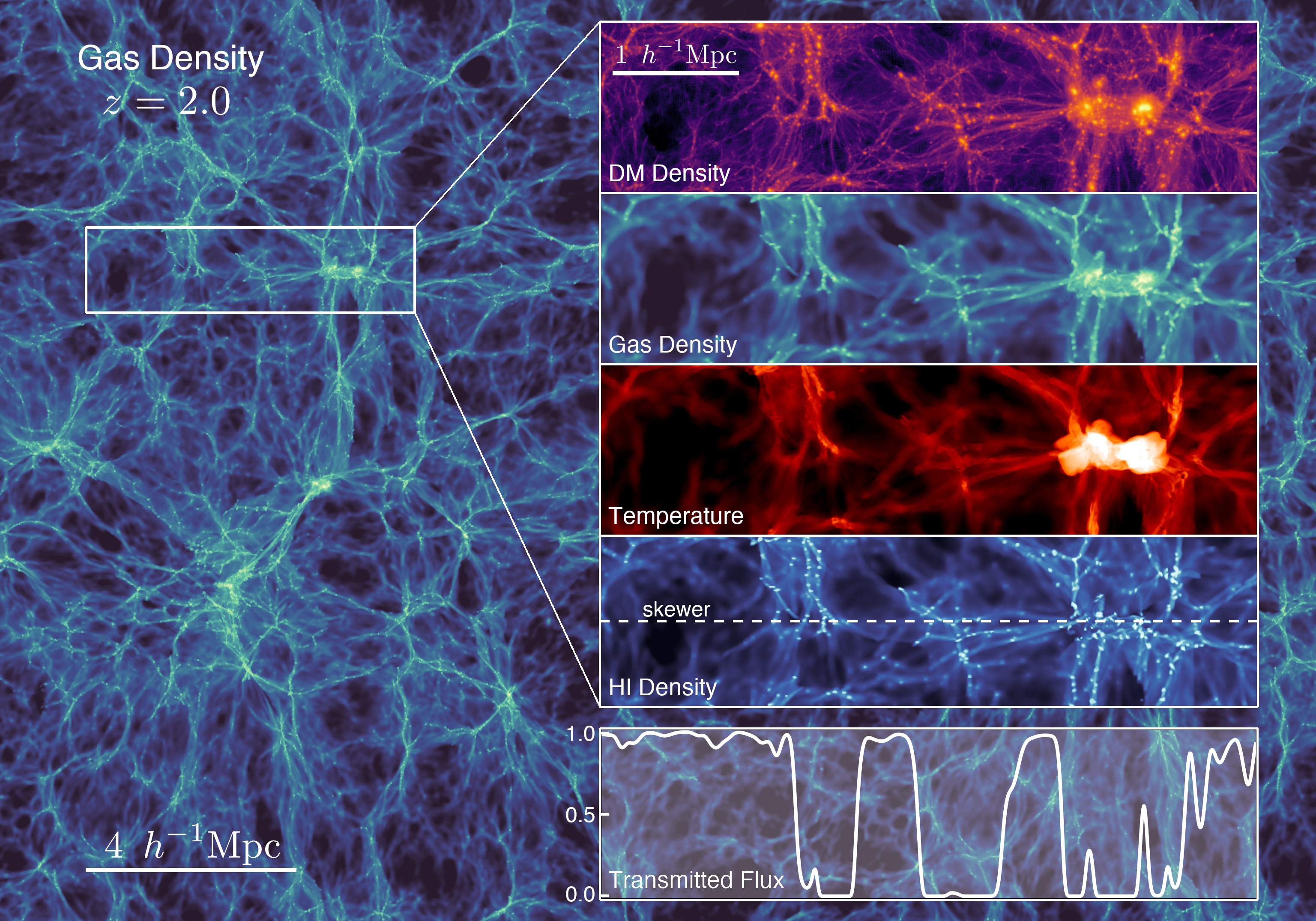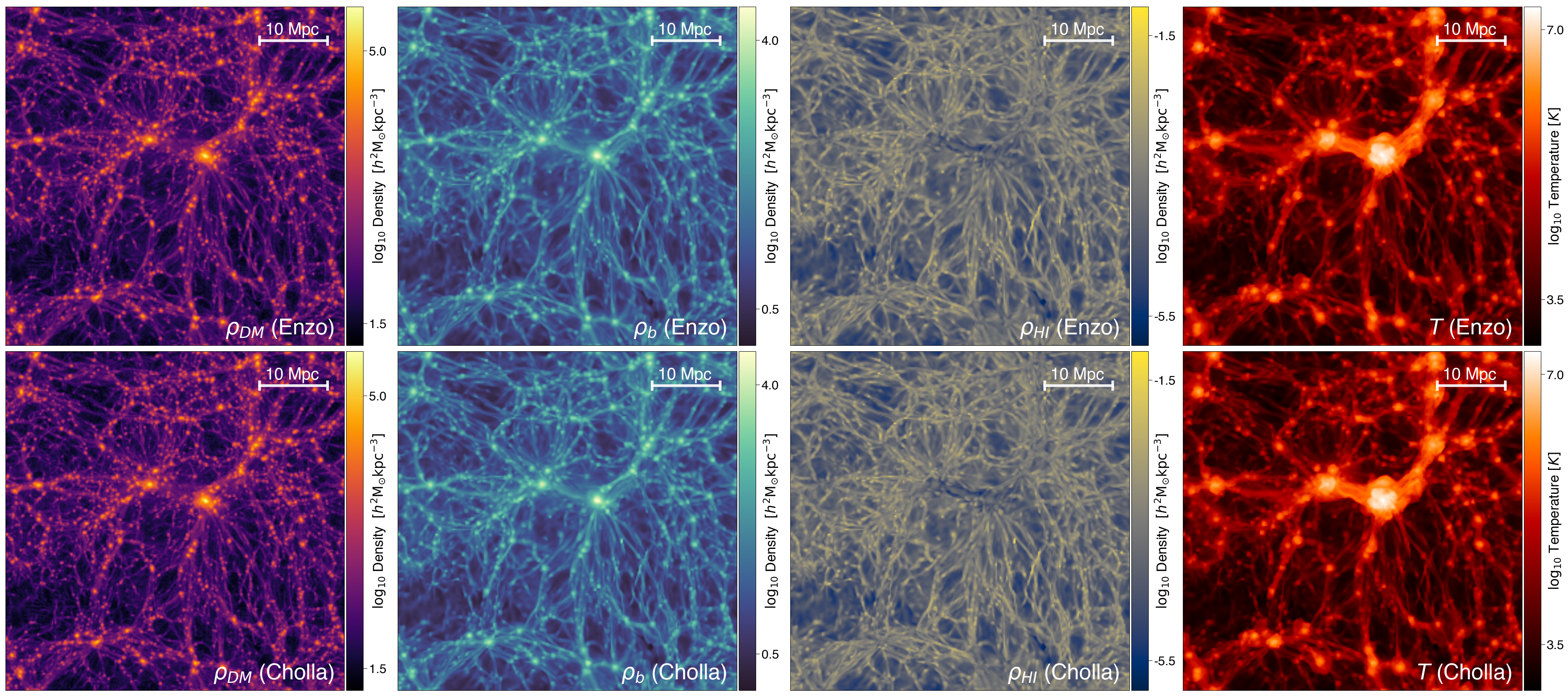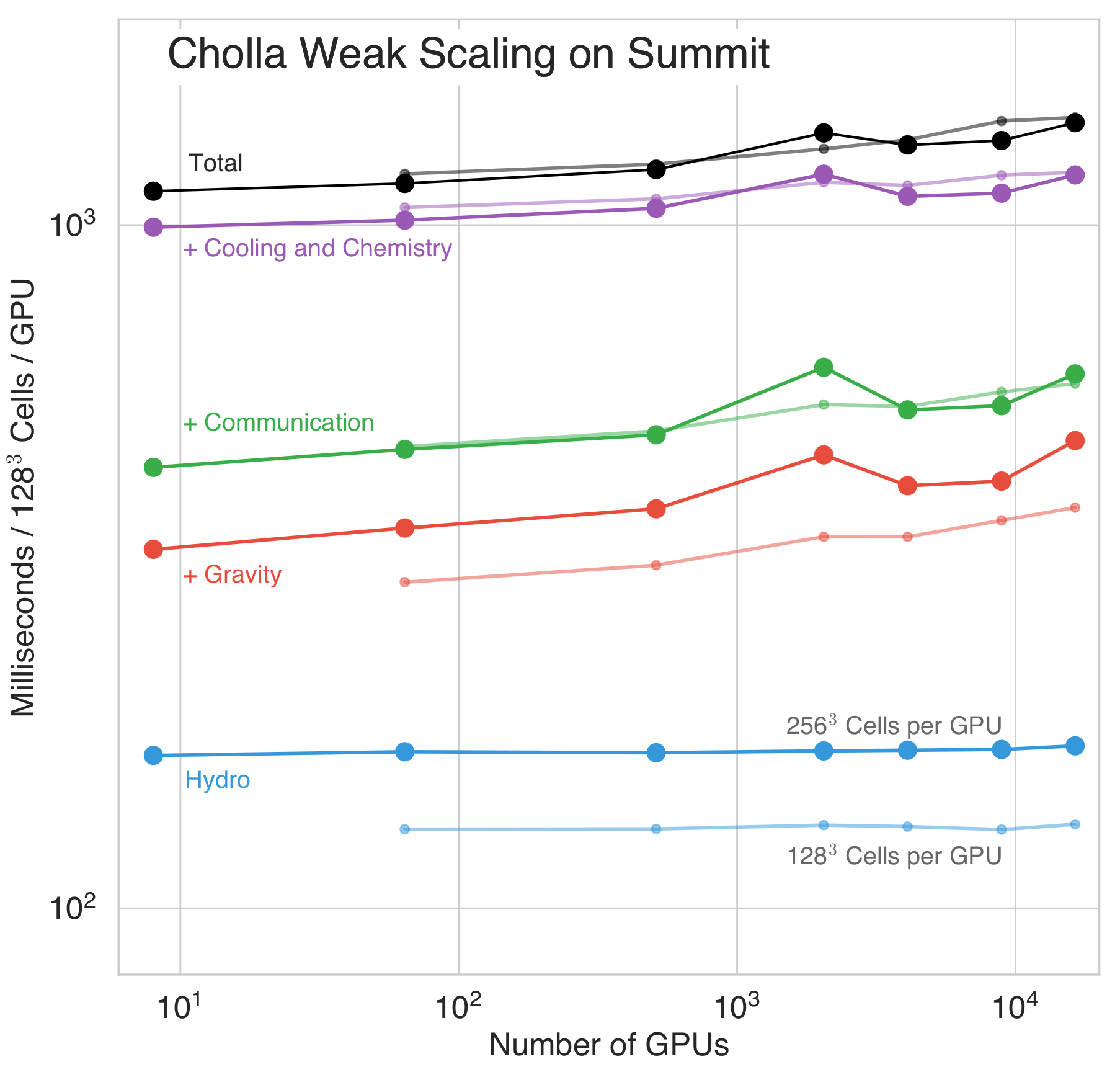CHOLLA:
Large Scale Cosmological Hydrodynamical Simulations on Multiple GPUs.
GitHub Repository: https://github.com/bvillasen/cholla
Originally Cholla was a hydrodynamics solver that runs in multiple GPUs. For my Ph.D. thesis I have extended Cholla to run cosmological simulations, I added several physics modules: \
- A distributed FFT based Poisson solver to include the self-gravity of the fluid. \
- A Particle-Mesh scheme to solve the collisionless dynamics of the dark matter particles.\
- Developed a Hydrogen + Helium chemical network to account for the reionization of the Universe from a uniform time-dependent UV background.
3D render of the evolution of the gas over the history of the Universe from a high resolution Cholla simulation performed using 512 GPUs in Summit (ORNL) and rendered with an original GPU implementation of a ray tracer.
The animation below shows the evolution of the dark matter for a Cholla simulation, the initial conditions are mostly uniform except for tiny perturbations corresponding to the quantum perturbations of the early universe, as time progresses the regions where the density is slightly higher exerts a gravitational pull over the surrounding material causing the growth of large dark matter structures called halos shown in yellow in the animation, the regions connecting the halos form the cosmic web. Galaxies are formed in the inner parts of dark matter halos.
Now, the following animation below shows the evolution of the gas density for a high resolution simulation that I ran on Summit ( number 1 on the top500 ) using 512 GPUs
The next animation shows a fly-by trough the evolving intergalactic medium, the animation was made by original software that I developed using the high resolution data produced by a simulation that I ran in Summit.
The image below shows the main components of a cosmological simulation, this is a very high resolution simulation consisting of 2048^3 cells that I ran using 512 GPUs in Summit.

The image below shows several components of a cosmological hydrodynamical simulation, the first column corresponds to the dark matter density, the second column shows the gas density, the third column correspond to the neutral hydrogen density and finally the last column shows the temperature of the gas. The top row shows the results from a simulation evolved using a popular code called Enzo and the bottom show shows the result from an analogous simulation that I ran using Cholla on 8 Nvidia P100 GPUs.

Cholla uses MPI, CUDA and OpenMP to leverage the computing power of the largest computers in the world. I have used Cholla to run cosmological simulations in Summit (ORNL, number one in the top500) where I measured the performance of the code obtaining near perfect scaling when used in up to 16,000 GPUs. The image below shows a near perfect weak scaling when using Cholla on Summit.
